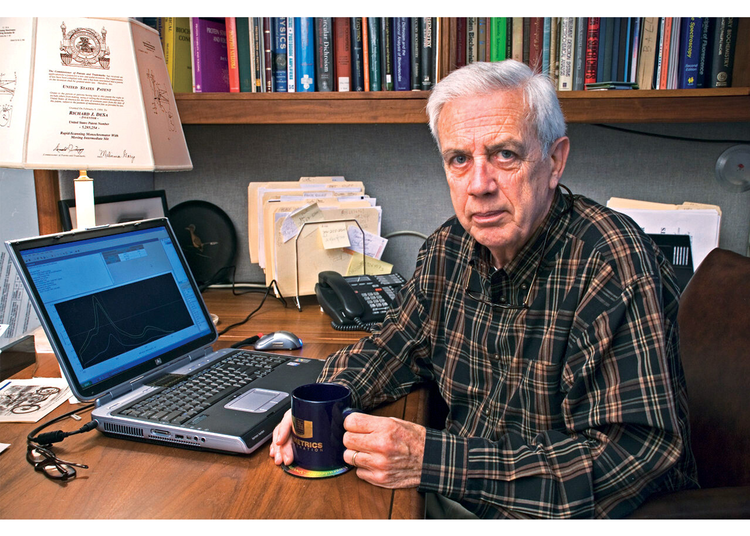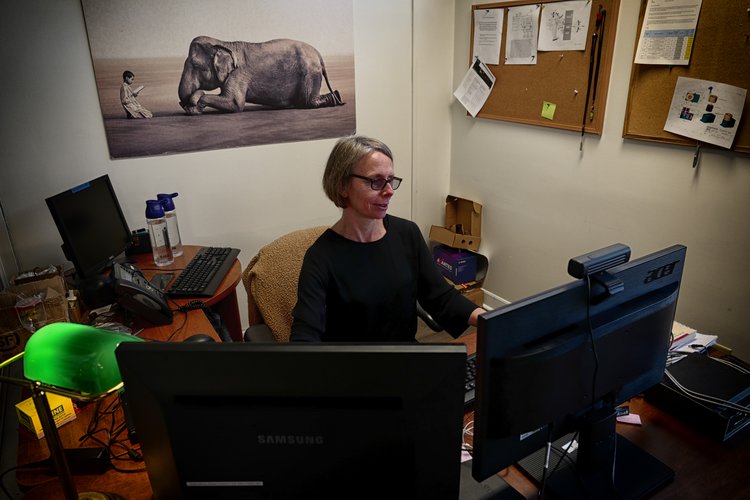Not known Facts About Spectrophotometers
Not known Facts About Spectrophotometers
Blog Article
How Uv/vis can Save You Time, Stress, and Money.
Table of ContentsThe Definitive Guide to Uv/visCircular Dichroism Fundamentals ExplainedNot known Details About Uv/vis/nir Uv/vis/nir Fundamentals ExplainedSpectrophotometers for Dummies

Spectrophotometry is a tool that hinges on the quantitative analysis of molecules depending on how much light is taken in by colored compounds.
Uv/vis Fundamentals Explained
A spectrophotometer is frequently used for the measurement of transmittance or reflectance of services, transparent or nontransparent solids, such as refined glass, or gases. Many biochemicals are colored, as in, they absorb noticeable light and for that reason can be determined by colorimetric procedures, even colorless biochemicals can often be converted to colored compounds suitable for chromogenic color-forming responses to yield compounds ideal for colorimetric analysis.: 65 Nevertheless, they can likewise be developed to measure the diffusivity on any of the listed light ranges that usually cover around 2002500 nm using various controls and calibrations.
An example of an experiment in which spectrophotometry is utilized is the decision of the equilibrium constant of a service. A certain chemical response within an option might occur in a forward and reverse instructions, where reactants form products and products break down into reactants. Eventually, this chemical reaction will reach a point of balance called a balance point.
Unknown Facts About Uv/vis
The amount of light that goes through the solution is indicative of the concentration of particular chemicals that do not enable light to go through. The absorption of light is due to the interaction of light with the electronic and vibrational modes of particles. Each type of particle has a private set of energy levels connected with the makeup of its chemical bonds and nuclei and thus will take in light of particular wavelengths, or energies, resulting in special spectral residential or commercial properties.
They are extensively used in lots of markets including semiconductors, laser and optical production, printing and forensic assessment, as well as in labs for the study of chemical compounds. Spectrophotometry is frequently utilized in measurements of enzyme activities, decisions of protein concentrations, determinations of enzymatic kinetic constants, and measurements of ligand binding reactions.: 65 Eventually, a spectrophotometer is able to identify, depending on the control or calibration, what substances are present in a target and precisely how much through estimations of observed wavelengths.
Created by Arnold O. Beckman in 1940 [], the spectrophotometer was produced with the help of his associates at his company National Technical Laboratories founded in 1935 which would become Beckman Instrument Company and eventually Beckman Coulter. This would come as a service to the formerly developed spectrophotometers which were unable to soak up the ultraviolet correctly.
All about Uv/vis
It would be found that this did not give acceptable outcomes, therefore in Model B, there was a shift from a glass to a quartz prism which permitted better absorbance results - circular dichroism (https://dzone.com/users/5082179/olisclarity1.html). From there, Model C was born with a modification to the wavelength resolution which wound up having three systems of it produced
It irradiates the sample with polychromatic light which the sample takes in depending on its homes. It is transferred back by grating the photodiode variety which finds the wavelength region of the spectrum. Ever since, the production and application of spectrophotometry devices has actually increased exceptionally and has actually ended up being one of the most ingenious instruments of our time.

Spectrophotometers Things To Know Before You Buy
Historically, spectrophotometers use a monochromator including a diffraction grating to produce the analytical spectrum. The grating can either be movable or repaired. If a single detector, such as a photomultiplier tube or photodiode is utilized, the grating can be scanned step-by-step (scanning spectrophotometer) so that the detector can measure the light intensity at each wavelength (which will represent each "step").
In such systems, the grating is repaired and the intensity of each wavelength of light is measured by a various detector in the selection. When making transmission measurements, the spectrophotometer quantitatively compares the portion of light that passes through a referral solution and a test solution, then electronically compares the strengths of the two signals and calculates the portion of transmission of the sample compared to the recommendation requirement.

Report this page